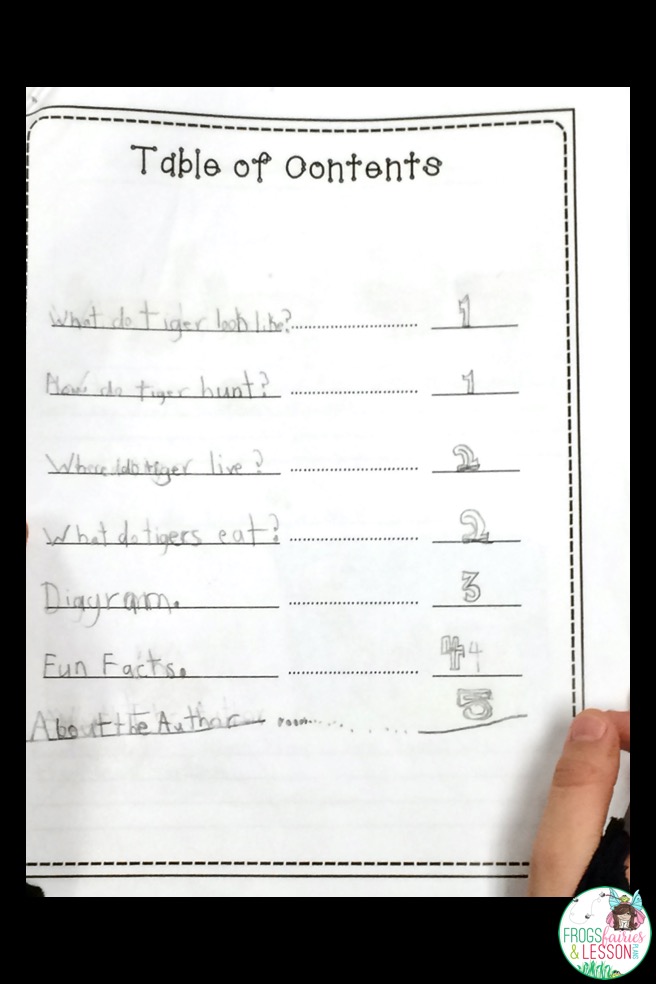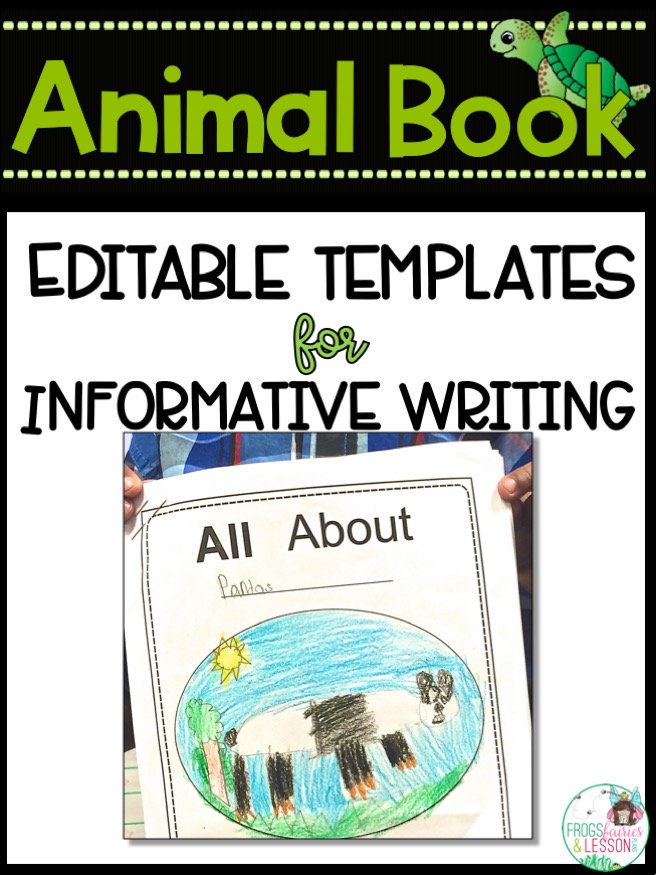Animal Books and Nonfiction Text Features
I always felt that the way we taught students about Nonfiction Text Features at my school wasn’t very efficient. We typically took 2 weeks to go cover the most common features, making sure our kids could identify them in books. I never thought this was very effective because even though students knew what captions, maps and tables of content were, none of the features served a real purpose to them. Unfortunately, it was all taught in isolation.

It seemed to me, that one of the best ways to make Nonfiction Text Features relevant and authentic for young students, was to deliberately model how we use them to do research. And what better way to do that than to have students use them in their own research during our Animal Book Writing unit!

Learning from and Using Nonfiction text Features:
Here are some great reading behaviors ro remind your students of, and some ways to show your students how much they can learn from Nonfiction Text Features!
👉Learn from Photographs
I think one of the most underused features of all are photographs! Unfortunately, we don’t spend enough time pointing out how much information we can learn from an image.

Here’s a way to to it:
First, show a picture from an animal book to your class and tell them one thing you learned about that animal, simply by “reading the photograph”. Keep flipping pages and have your students share what they are learning.
👉Learn from Captions
A good transition after looking at photographs, is to remind your students that good readers confirm their findings by reading the captions. Model finding information on a photograph, then reading a caption to prove or disprove your findings.
👉Learn from Diagrams

Prior to teaching this lesson, look for books with good diagram examples and how students how these features help readers. I like to cover the labels with a sticky note, and ask students what they think the labels might say. Then reveal the labels to see how close they were. At this point, have your students make an illustration with labels for their Animal Book.
👉Learn from Maps
My students always took some time to warm up to maps. I guess they felt intimidated by all the information. Model how to read a map to make this feature less intimidating to your students. First, point out the Map Title and how that alone tells us a lot about the map. Then look at the legends. Explore each legend, going back and forth from the legend to where they appear on the map. Last, talk to your students about how important it is to “stick with the map” before turning the page and moving on.
👉Learn from Titles
When flipping through your Animal Book pages searching for information, stop at the titles that you find. Discuss with students what the title reveals about the information they will find on the page. Then read a bit of the page to confirm what the students predicted.
👉Learn from the Table of Contents

Your students’ Animal Book Reports should have a Table of Contents. Before teaching your students how to create one, keep modeling how to use one. Show your students the Table of Contents from one of the Animal Books you are using. First, ask them in what chapter they think they might find a certain topic. Then, ask what page you should open the book to.
👉Learn from the Index
Similarly, show students how you can isolate key words from a question and search those words in the index.
👉Learn from the Text
Lastly, reiterate how important it is to read Nonfiction text with a question in mind, and to keep an eye out for answers!
❤❤❤❤❤❤❤❤❤❤❤❤❤❤❤❤❤❤❤❤❤❤❤❤❤❤❤❤❤❤❤❤
Looking for more on Animal Books?
👏Read my post: How to Write an Animal Book.
❤❤❤❤❤❤❤❤❤❤❤❤❤❤❤❤❤❤❤❤❤❤❤❤❤❤❤❤❤❤❤❤
Looking for resources?
👏To purchase editable templates for an Animal Book Report, check the preview below, or click here.









 |
| Available from TpT |
 |
| Writing Folder Picture Book Reading Journals |